Last week I had posted questions for the RBI Quiz 2021. The answers are provided below. I should add that most of these questions are curtain raisers to future and more elaborate posts on the subject. Stay tuned!
Which Finance Minister?
1. He was considered for the post of Deputy Governor, Reserve Bank of India, but overlooked for being politically ambitious. Later, he became India’s Finance Minister. Who was he?
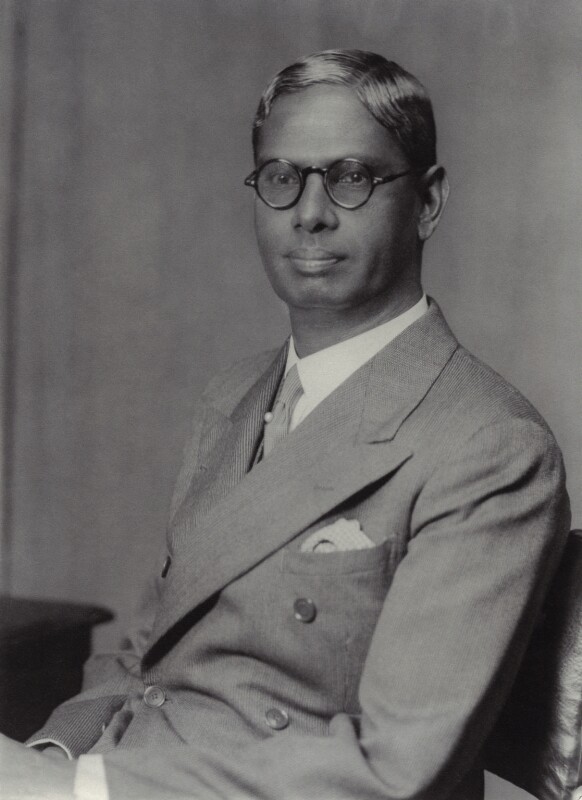
R.K. Shanmukham Chetty was among the few names considered for one of the two positions of Deputy Governor. James Taylor had already been identified for the first post.
James Grigg, the Finance Member on the Viceroy’s Executive Council, wrote to Findlater Stewart at the India Office, London: “I don’t care for Chetty and I don’t want him as Deputy governor of the Reserve Bank because he is too ambitious and political – and moreover he is unsound both on the rupee ratio and on protection.”
Chetty, instead, became Dewan of Cochin State. He remained there till 1941, had his clashes with the Dewan of the neighbouring Travancore, Sir C.P. Ramaswamy Iyer, and was a member of the Indian delegation to the Bretton Woods Conference. There is still a major road in Kochi named after Chetty where I spent many childhood days.
He became the first Finance Minister of Independent India, and presented India’s first budget in November 1947. He resigned a year later on a controversial issue relating to tax investigations. M.O. Mathai, Nehru’s Secretary, gives a version of this in his Reminiscences. But, perhaps, Mathai’s is not the last word on the subject. See this article by S. Muthiah, the late historian of Madras.
Who then?
2. Ironically, as struck me recently, the Deputy Governor selected in place of the above was the first to occupy an elected position. He left the Bank to head his party and later his State. Name him. There will be separate posts on both soon.
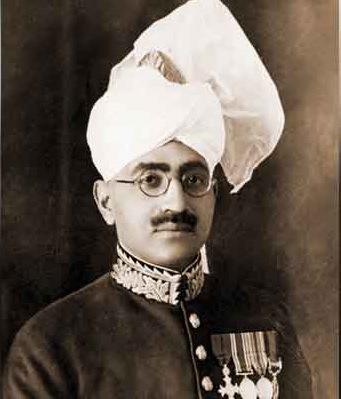
Sir Sikander Hayat Khan (1892-1942) became the second Deputy Governor on 1 April 1935. He resigned on 20 October of the same year to return to state politics in his native Punjab. He became the head of his Unionist Party, opposed to the Muslim League of Jinnah and Iqbal, in 1936. After the first elections held under the Government of India Act, 1935, he became Premier of Punjab in 1937, a post he held for over five years until his death on the night of 25/26 December 1942.
Which Governor?
3. Among all the Governors so far, who was the only one to have died in office? A separate post on this Governor is also due.
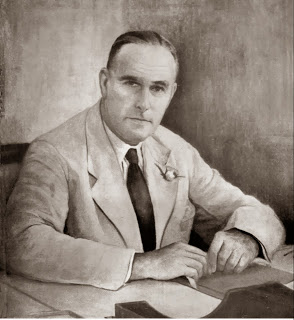
Sir James Braid Taylor, the second Governor of the Reserve Bank of India, is the only Governor to have died in office. He passed away on 17 February 1943 after a brief illness diagnosed as coronary thrombosis. He was two months short of 52.
Deshmukh describes the developments in his memoirs. Taylor and Deshmukh had gone to New Delhi where they were guests at the residence of Jeremy Raisman, the Finance Member. Deshmukh returned early. The day Taylor came to office, he walked into Deshmukh’s room to say that he was leaving early as he was not feeling well. He never returned to office.
That it took another six months for a successor to be appointed is also a subject for another post.
The photograph given alongside is perhaps the only solo one available of Sir James Taylor.
Which Indian College?
4. Which Indian College, perhaps the only one (I will be happy to be corrected), produced three Reserve Bank Governors? I had commented earlier on this while writing on a completely unrelated subject.
Presidency College, Madras (Chennai). I referred to the College in my articles on the Benegal Brothers and the Victoria Students Hostel.
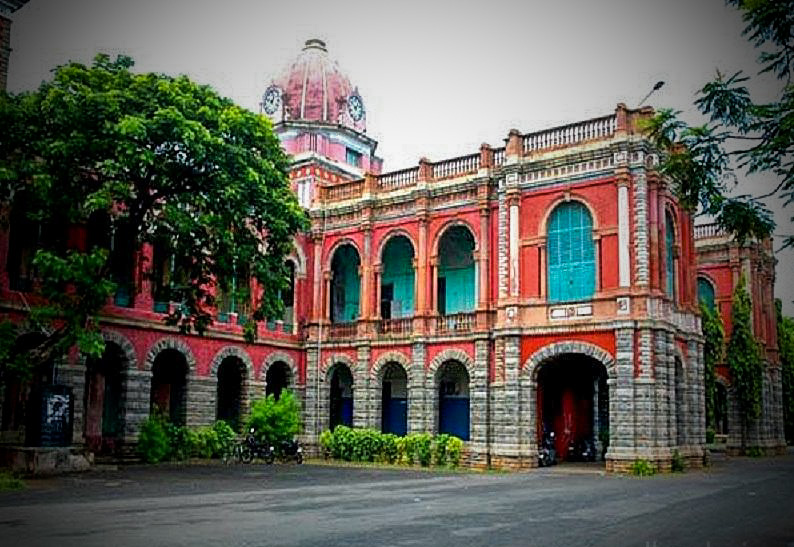
The three RBI Governors from the Presidency College were Sir Benegal Rama Rau, S. Jagannathan, and M. Narasimham, all with different mother tongues though from the same College. The College was also till recently the only one to have produced two Nobel Laureates, C.V. Raman and his nephew, S. Chandrashekhar. But, it also has to its credit, S.R. Srinivasa Varadhan, winner of the 2007 Abel Prize by the Norwegian Academy of Sciences and Letters, widely considered as the equivalent of a Nobel Prize in Mathematics.
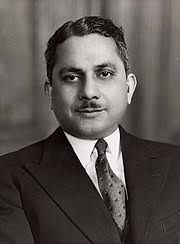
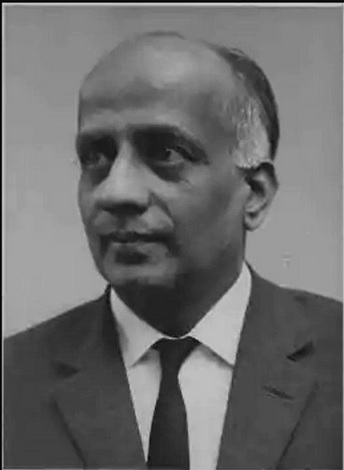
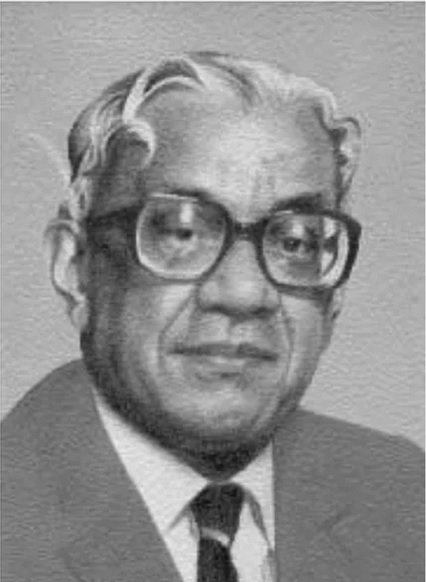
A doubt that arose while writing this was whether Presidency College Calcutta (now Presidency University) also had three (or perhaps more) Governors among its alumni: P.C. Bhattacharya, Amitabh Ghosh, and Bimal Jalan? We know that Bimal Jalan studied there. But, there is no publicly available information on the other two. Can someone throw light on this?
Governor with a Kashmiri wife
5. No Kashmiri has as yet become the Governor of the Reserve Bank of India. But, which Governor of the Bank was married to a Kashmiri, who was famous in her own right? Soon, I will have a separate post on her.
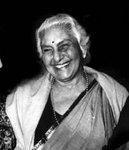
Sir Benegal Rama Rau married Dhanvanthi, daughter of Bhagbhari Handoo, an official with the Southern Mahratta Railways, headquartered in Dharwar. Dhan to family and friends, she grew up in a Railway Colony in the outskirts of nearby Hubli. She was one among the few girl students at the Presidency College, and later taught at nearby Queen Mary’s College after undergoing training at the Teacher’s College, Saidapet.
The Alliance
The marriage followed a chance meeting between the parents at the Saraswat Club in Madras, maybe the present Kanara Saraswat Association in Kilpauk. During the meeting, the two shared their angst at their son/daughter not getting married. Rama Rau was insisting that marriages should take place between communities so that old customs and rituals could be wiped out. Dr. Raghavendra Rao, Rama Rau’s father, asked Mr. Handoo “shouldn’t the unconventional son and the unusual daughter be given an opportunity to meet?” The meeting ended in marriage in 1919. He was 30, and she was nearly 26, both very late by the norms of the day.
A low key wedding
The marriage was low key for more reasons than one. The family had lost Dhanvanthi’s elder brother, Bali, a doctor in Sheffield, to the flu pandemic of 1918/19. The second brother, Ram, who was called to the bar, was marrying a Belgian girl. Moreover, Dhanvanthi insisted on a civil marriage. In those days, this required that both not belong to a recognized religion. Dhanvanthi was willing to give a declaration to the effect. Rama Rau, a Theosophist, readily agreed. As it turned out, it would become the first registered Kashmiri marriage. It was boycotted by most relatives as Dhan was marrying a non-Kashmiri. Dhanvanthi went through the marriage and honeymoon in Ootacamund with an injured and swollen foot. Food was delivered in the room, but Rama Rau sometimes chose to go to the dining room. As Dhanvanthi wrote:
“My husband either ate with me or went out into the dining room alone, but made no friends. He went for long walks though he did not encourage me to limp out of my room or meet any of our fellow guests in the hotel. I did not know him well enough to ask questions, but got the impression that he was rather shy about having a wife, particularly of being seen helping me to move about in public.”
Some day, I will post separately on how their meetings took place over three days, how Rama Rau was shy and reserved, but finally proposed, and why Dhanvanthi agreed to the wedding.
Central Banker as Prime Minister
6. When Mario Draghi became Prime Minister of Italy earlier this year, he was not the first central bank Governor to lead his country. Nor was Manmohan Singh the first. The credit, I believe, goes to this quiet and self-effacing gentleman who incidentally I had the pleasure of meeting once. Name him and the country. (I will be happy to be informed of other instances).
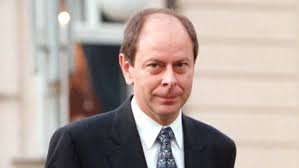
This, I agree, is not actually a Reserve Bank of India question. But, it came about as quite a few I know think that the answer is Manmohan Singh. The right answer, unless someone can prove otherwise (with so many countries, who knows?), is Josef Tošovský who headed the central bank of Czechoslovakia from December 1989 to November 2000. During this period, the name of the central bank also changed from the Soviet-era State Bank of Czechoslovakia to the post-Soviet Czech National Bank (CNB). Over the years, the CNB has had a chequered history from being probably the first central bank established after the First World War to German Occupation to nationalisation to a post-Soviet era.
Under certain circumstances, which I will not go into in detail, Tošovský was designated Prime Minister in December 1997 and remained in that position till July the following year. In December 2000, Tošovský became Chairman of the Financial Stability Institute at the Bank for International Settlements, Basel, Switzerland. He continued in that position till December 2016.
Rama Rau and Deshmukh
7. Before Benegal Rama Rau succeeded C.D. Deshmukh as Governor, Reserve Bank of India, he was an understudy to Deshmukh for some time. He also, in a sense, reported to Deshmukh who became the Finance Minister. This, in my view, was an unusual arrangement, telling on the character of Rama Rau. What was unusual about it? I will elaborate more in my separate post on Rama Rau.
In the Indian Civil Service, Rama Rau was senior to Deshmukh by six years. Even today, a one year seniority in the administrative service is big deal. In those days, in the ICS, a gap of six years made a huge difference. That Rama Rau joined the service before the War, and Deshmukh after the War and the M-C Reforms, makes them from entirely different generations. That Rama Rau agreed to the understudy arrangement reflected his character and humility.
Ten months later, when Deshmukh became Finance Minister, Rama Rau was to in effect to report to someone once his rank junior. I believe he was asked whether he was okay with the arrangement, and he consented.
When you look at the big picture, I feel Rama Rau got a raw deal, also for a few other reasons. I will write more on that later.
No to Governor
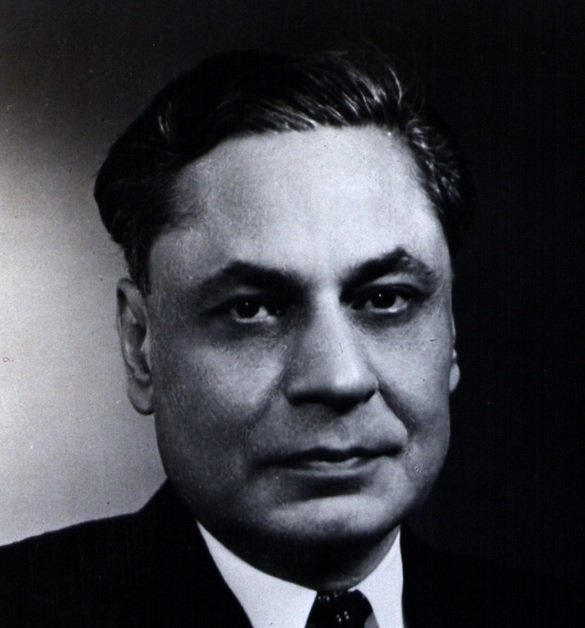
8. Which famous civil servant refused Governorship of the Reserve Bank of India on the grounds that he did not want to be ordered about by his juniors?
Maybe he was exaggerating, as the Reserve Bank of India’s official history claims, or justifies. But, if I remember correctly, he had direct experience in this regard.
Brij Kumar Nehru, who was second cousin of then Prime Minister Indira Gandhi, turned down an offer to be made Governor of the Reserve Bank of India. His paternal grandfather was elder brother of Motilal Nehru. He wrote in his memoirs, Nice Guys Finish Second:
“The reason why I had so far refused was the lack of independence of the Governor. I explained to him that the great battle between TTK and Rama Rao, which the latter lost, had made it clear that the Governor was a subordinate of the Ministry of Finance. Even as Joint Secretary, I used to issue orders to the Reserve Bank. I did not cherish the idea of my juniors ordering me about.”
The Bank’s official history explained:
“But it is easy to exaggerate the problem. The truth is that, for the most part, the Bank and the Ministry worked well together. Such differences as arose were inevitable and can be seen in all countries.”
History of Reserve Bank of India, Volume 3, p. 12
Durgabai’s Memoirs
9. Durgabai Deshmukh, wife of C.D. Deshmukh, wrote her memoirs in the 1970s, as did Deshmukh. What was the title of her memoirs?
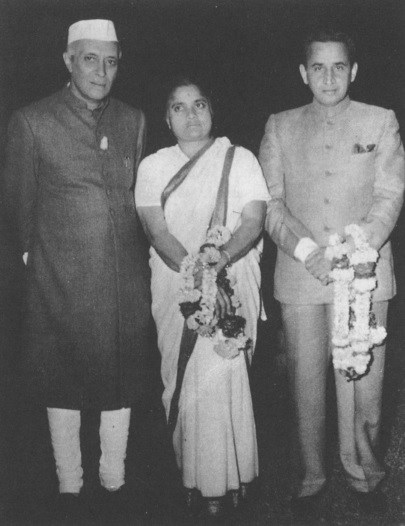
This is one of the easy questions. The answer is Chintaman and I. Published by Allied Publishers. A minor correction in the question is required. The book was written in the late 1970s, but published in either 1980 or 1981. She passed away in 1981, and Deshmukh the following year.
As Durgabai married Deshmukh only in 1953, it obviously does not cover the latter’s Reserve Bank years which ended in 1949. But, it does provide great insight into the man and his persona.
Youngest Deputy Governor
10. Who is the youngest Deputy Governor of the Reserve Bank of India to date? What was he before joining the Bank?
Dr. R.K. Hazari. Hazari was editor of the Economic and Political Weekly. He became Deputy Governor at the age of 37 in 1969, and continued in that position till 1977. Please see a profile of Dr Hazari in the website of his son, Hemindra Hazari, a banking analyst.
Deshmukh and N.R. Pillai
11. Perhaps the closest friend of C.D. Deshmukh in the ICS was N.R. Pillai, the first Cabinet Secretary. As Finance Minister, Deshmukh considered making him a Governor of the Reserve Bank. Apart from being from the same cadre of Central Provinces and Berar, what other unusual fact brought them closer?
Both of them were among the few Indian civil servants who had British wives. Combined with being of the same age group and from the same cadre, this fact brought the families closer.
Another was Abdullah Yusuf Ali (he had two in succession) about whom I had written earlier. B.K. Nehru had a Austro-Hungarian wife.
Governor who signed a one rupee note
12. Seven Governors of the Reserve Bank of India had signed one rupee notes as Finance Secretary before they became Governor. Who was the only one to have signed a one rupee note after his tenure as Governor?
M. Narasimham. He was the only one to become Finance Secretary after his tenure as Governor.
A “Demon” as Governor
13. Which Reserve Bank Governor started his career as a “demon,” as they were referred to colloquially, and in jest.
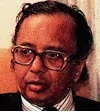
Of course, I admit this was a nasty one. Because there is no information in the public domain. Handed down by word of mouth, S. Venkitaramanan started his career in the Physics Department of University College, Trivandrum, as a “demonstrator” in its Physics Lab. They were not so affectionately, and maybe out of jealousy, referred to as “demons.” Only the best students had this honour. And Ramanan, as he was known to friends, was a topper all along, from the 7th standard public examination in vogue then, to ESLC (English School Leaving Certificate), Intermediate, B.Sc. Physics, and the IAS, in every subject, in aggregate, and in extracurricular activities (except perhaps once, but that is a different story).
I owe the information on “demon” to P.R. Rajashekharan Nayar, my boss in my early days of working in banking regulation and supervision. As for academic credentials, I owe it to my late father, who was a fellow student, perhaps one year junior, and colleague at the University College and in government service.
Nayar Saab
To digress, PRR or Nayar Saab to admiring colleagues, was a contemporary of Venkitaramanan at the University College. A legendary inspecting officer, Nayar was the first employee of the Trivandrum Office. He retired in 1993 as General Manager (or Joint Chief Officer as they were known then) after working for nearly four decades in banking supervision. His period saw the rationalisation of banking in Kerala from 200 plus banks when Palai Central Bank failed in 1960 to just 12 a decade later.
To my knowledge, Nayar’s inspection report on Indian Bank for the year 1988-89 was the first and perhaps still the only report to have received a letter of appreciation. That his warning signals were largely ignored and what came about a few years later as the biggest loss in the history of Indian banking should have earned its rightful place in history.
Nayar’s inspection skills greatly impressed S. Padmanabhan (of Padmanabhan Committee fame), then CMD of Indian Overseas Bank, and former MD/DMD of SBI. He sought Nayar’s services on deputation for a year to audit the bank’s Hong Kong and Singapore branches. These countries did not then allow foreign regulators to inspect bank branches in their jurisdiction.
Nayar was among the best General Managers I worked with, definitely the most admired. To such great bosses, their quiet and unobtrusive mentoring, without the brouhaha that now surrounds it, I owe whatever I achieved in my career. I feel that the Bank’s history would be incomplete without the stories of many like Nayar. They are its forgotten soldiers. As they joined the Bank at a lower level, they did not rise high enough. Nevertheless, their contribution to its reputation has been no less than any other. More on Nayar and Trivandrum Office in a future post.
Governor from the IA&AS
14. Who was the only Governor of the Reserve Bank of India from the Indian Audit and Accounts Service?
Paresh Chandra Bhattacharya was the only Governor from the Indian Audit and Account Service. He was the second and last Governor to have been Chairman of State Bank of India before becoming Governor. The previous one was H.V.R. Iengar (no ‘y’ after I please!). Sir Osborne Smith, the first Governor of the Bank, was one of two Managing Governors of the Imperial Bank of India. Establishment of IDBI and Unit Trust of India, and the infamous 57% devaluation of the rupee on that dreaded day of 6/6/66 were the major developments during his tenure.
Bhattacharya studied in University of Calcutta. But the university then had a wide reach cutting across provinces. Did he also study Economics? Was this also at the Presidency College? Wikipedia says he was from Bengal. But, someone told me many years back that he was from Tripura. Could someone please clarify?
First professional economist as Governor
15. Who was the first professional economist to become the Governor of the Reserve Bank? I was wrong on this for a long time.
The first professoinal economist as Governor of the Bank was Bhaskar Namdeo Adarkar. He succeeded L.K. Jha and had the second shortest tenure as Governor, after Amitabh Ghosh.
L.K. Jha was, to the best of my knowledge, the first Governor to have graduated in Economics. He did so at Cambridge University. But, he chose to become a civil servant rather than a professional economist. For a long time, I had thought that Dr. I.G. Patel was the first economist Governor. In fact, even M. Narasimham, another professional economist, preceded Dr. Patel, though for a short period. But, Dr. Patel remains the first Governor to have a regular full tenure.
First commercial banker as Deputy Governor
16. Which Deputy Governor of the Reserve Bank of India was the first from a commercial bank, and in which year?
Amitabh Ghosh. He was Chairman and Managing Director of Allahabad Bank. He was in office from 1982 to 1992. Hopefully, I will post a separate piece on Ghosh as well as the second commercial banker, S.P. Talwar, the only one I got to directly work with.
Three Governors of the Bank came from a commercial bank. These were Osborne Smith, HVR Iengar, and P.C. Bhattacharya. Of these, only Smith was a commercial banker. The other two had brief stints as the second and third Chairmen of State Bank of India before coming to the Reserve Bank.
Governor who started at ICICI
17. Which Reserve Bank Governor started his career at the ICICI?
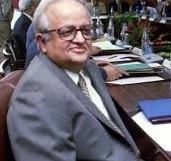
Dr. Bimal Jalan. After education at Presidency College, Calcutta, under the likes of Amiya Bagchi, Tapas Mazumdar, Dipak Banerjee, and Mihir Rakshit, Jalan studied at the Oxford and Cambridge universities. Thereafter, he joined ICICI, then a relatively new financial institution, for a short stint before joining government service as an economic adviser.
A prolific writer on issues and developments relating to the Indian economy, Dr. Jalan is one of the few Governors in the second half of the Bank’s history (post-1977) yet to write his memoirs. One hopes he does!
Reserve Bank and Rural Credit
18. Apart from Issue and Banking Departments, which other Department was specifically mandated under the Reserve Bank of India Act, 1934? The Act was following which country’s example?
Agricultural Credit Department. The Reserve Bank of India Act borrowed the idea from the Rural Credit Department of the Commonwealth Bank of Australia, which was then performing Australia’s central banking functions. B. Sitaramaraju, a private member, had suggested the amendment, but it received almost universal support.
The Finance Member, however, opposed the amendment as he felt that even in Australia with a much smaller population, the initiative was not successful. The Commonwealth Bank of Australia (which continues to exist as a commercial bank) gave way later to the new central bank, Reserve Bank of Australia, which finally closed its Rural Credit Department in 1998. I will write more on Reserve Bank and rural credit in a future post.
Student of Harold Laski
19. This Reserve Bank Governor was a former student of Harold Laski. Name him.
L.K. Jha. This was at the London School of Economics. But, I would like to have confirmation from another source too, if possible. LK Jha is another Governor who one wishes had written his memoirs. Not just for his tenure at the Reserve Bank but for his overall contribution across sectors.
Incidentally, my father considered LK Jha the most brilliant and consummate civil servant he had met. Jha always came to meetings extremely well prepared, listened to everyone, recapitulated divergent views in a clear, concise, balanced, and dignified manner. And, of course, he took decisions. He must have been disappointed that he was not taken into confidence for bank nationalisation (see D.N. Ghosh’s No Regrets).
Before LSE, Jha was at Cambridge University where also he studied Economics. But, as he was at Trinity College, he did not actually study under Keynes who was at King’s College.
First Economic Adviser
20. Which ‘star pupil’ of John Keynes was the first professional economist at the Reserve Bank of India, and later its first Economic Adviser?
J.V. Joshi. This is what the Reserve Bank of India’s official history writes on him:
In the middle of 1943, the Research Section was expanded for undertaking a fuller study of problems of central banking and wartime fiscal and monetary developments as a background to the proper consideration of questions like controls, planning for reconstruction and development and international currency and exchange arrangements that were likely to arise in the post-war period…
Towards the end of that year, the Bank arranged to obtain the services of Mr. J. V. Joshi, the Deputy Economic Adviser to the Government of India, on loan as Senior Economist for the purpose not only of advising the Bank on economic matters including currency and central banking, but also for reviewing and suggesting improvements to the existing machinery for collection’ and coordination of economic intelligence; Mr. Joshi was later to become the Bank’s first Economic Adviser. Mr. Joshi served the Bank for over a decade. After a four-month spell as Deputy Governor, in a leave vacancy in the latter half of 1952, Mr. Joshi worked as an Executive Director for two years, retiring in January 1955.
History of Reserve Bank of India, Volume One, p. 251.
I hope you enjoyed reading the answers. Once again, my best wishes for a happy new year. Cheers, G. Sreekumar
© G. Sreekumar 2022.
For periodical updates on all my blog posts, subscribe for free at the link below:
https://gsreekumar.substack.com/
![]()